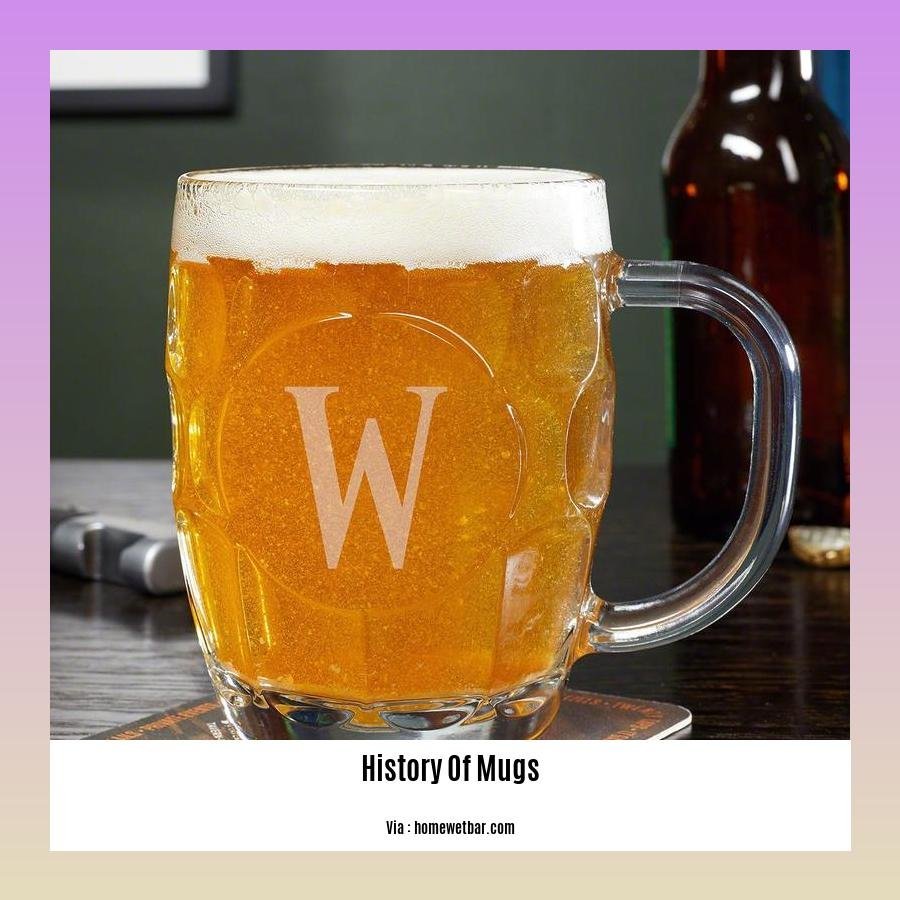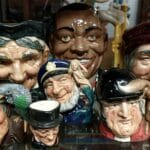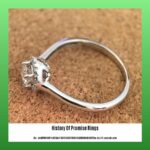Embark on a journey through time as we delve into the rich history of mugs, from their humble origins as utilitarian vessels to their current status as cultural icons. From the ancient world to the modern era, mugs have played a pivotal role in our daily lives, serving as symbols of hospitality, friendship, and personal expression. Join us as we explore the captivating stories behind coffee mugs, tiki mugs, shaving mugs, and more, uncovering the hidden narratives that have shaped their cultural significance.
Key Takeaways:
The word “mug” originated from the 16th-century Scandinavian term “mugga.”
Mugs have been in existence for over 8,000 years, with the oldest ones made from clay.
Harvey Adams invented the modern coffee mug in the 1800s.
Mugs initially evolved from bone or wood to pottery and finally to metal.
The use of ceramics in mug-making revolutionized the craft, allowing for customization and durability.
History of Mugs
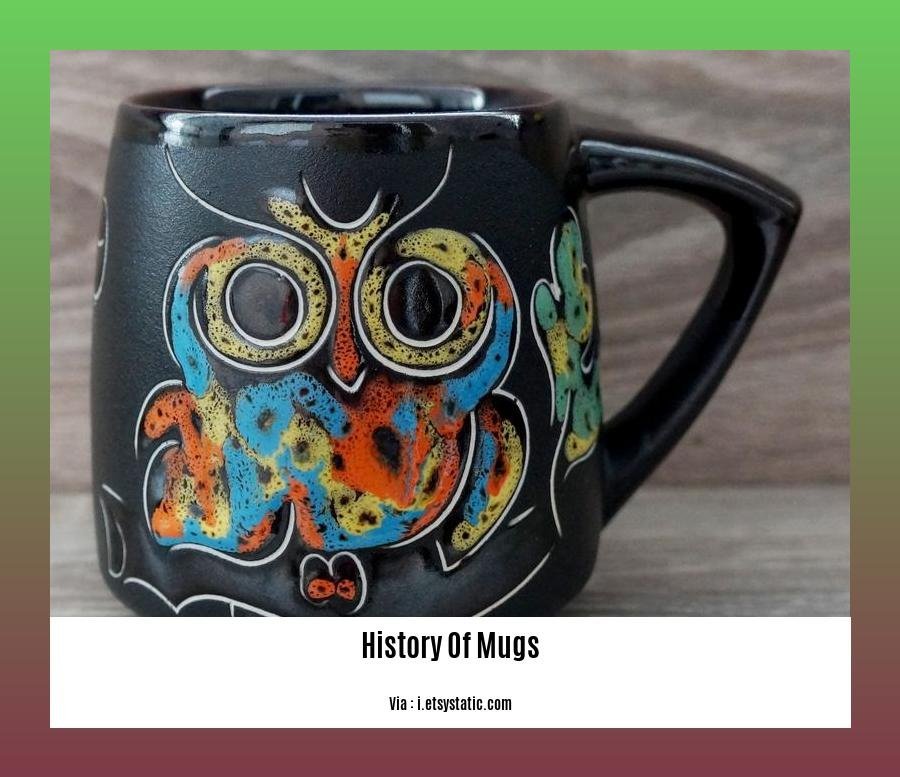
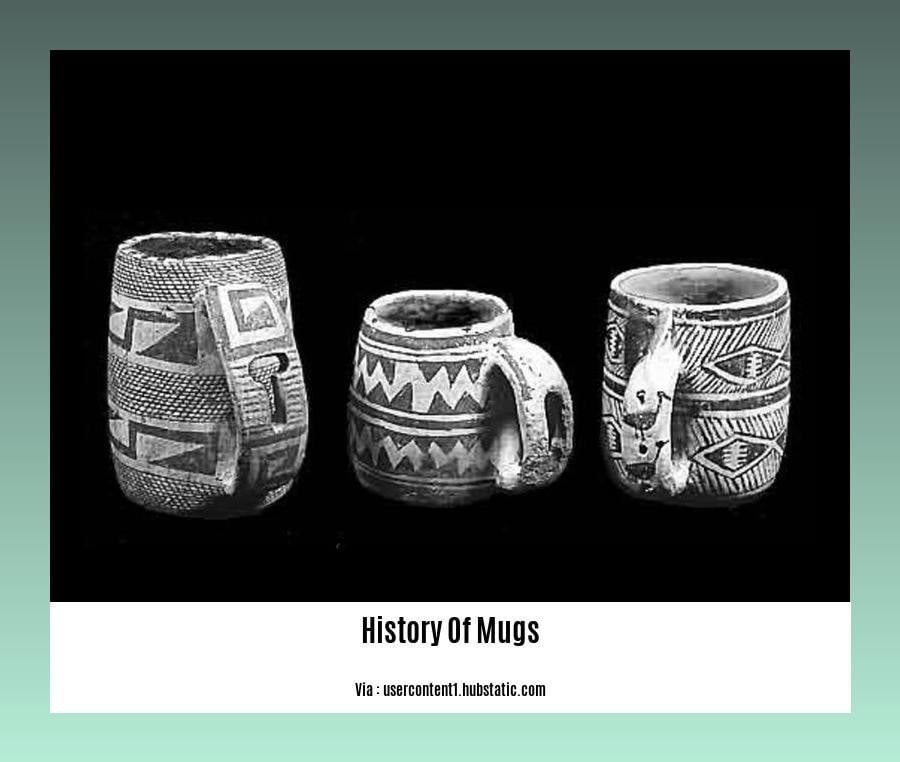
Mugs: A Journey Through Time and Culture
Journey with us as we delve into the captivating history of mugs, tracing their evolution from humble origins to their current status as cultural icons.
The Genesis of Mugs
The word “mug” can be traced back to the 16th century Scandinavian term “mugga,” suggesting a long and storied history.
The earliest mugs, dating back over 8,000 years, were crafted from clay, serving as simple vessels for daily use.
Bone, wood, and pottery followed clay as materials for mug-making, each contributing to their durability and versatility.
The Rise of Ceramics
In the 18th century, the introduction of ceramics revolutionized mug-making.
Ceramic mugs were not only more durable than their predecessors but also allowed for intricate designs and customizations.
This versatility led to the rise of mugs as both functional tools and decorative objects.
The Modern Era
The 19th century witnessed the invention of the modern coffee mug by Harvey Adams, a pivotal moment in mug history.
Adams’ design featured a handle and a thickened rim, providing a comfortable grip and enhanced heat retention.
This design quickly gained popularity, becoming the standard for coffee mugs as we know them today.
Mugs as Cultural Icons
Over the years, mugs have transcended their utilitarian purpose, evolving into cultural symbols and collectibles.
They have become a canvas for artistic expression, adorned with vibrant colors, intricate patterns, and memorable quotes.
Themed mugs, such as those featuring beloved characters from movies or TV shows, have become highly sought-after items among collectors.
Mugs have also become a symbol of comfort and familiarity, often associated with cozy mornings, warm beverages, and cherished memories.
Their ability to evoke emotions and memories has cemented their place in our cultural landscape.
Conclusion: Mugs Through the Ages
From humble beginnings to their current status as cultural icons, mugs have come a long way.
They have played a significant role in our daily lives, serving as functional tools, decorative objects, and cherished collectibles.
Their enduring popularity is a testament to their versatility and their ability to adapt to changing tastes and trends.
As we continue to sip our favorite beverages from our cherished mugs, let us appreciate the rich history and cultural significance that these seemingly ordinary objects hold.
Here are some interesting facts about the history of music genres, from ancient rhythms to modern beats. Dive into the rich history of music in the Philippines and discover how it has evolved over time. Explore the fascinating history of nail care and how it has become an essential part of our grooming routine.
History of Shaving Mugs
Shaving mugs, an integral part of shaving history, are more than mere containers for lather. They hold stories of hygiene, craftsmanship, and cultural significance that have shaped our grooming rituals over the centuries.
Early Shaving Rituals:
In the 19th century, barber shops were the hubs of male grooming. Barbers relied on communal shaving bowls for lather, leading to the spread of skin infections like razor rash. This concern sparked the rise of personal shaving mugs, initially sold in barber shops to provide clients with their own hygienic shaving vessels.Evolution of Shaving Mugs:
Initially made from metals like pewter or brass, shaving mugs evolved to include intricate designs. Ceramic mugs with hand-painted motifs or transfer prints became popular, adding a touch of personal style to the shaving routine.Scuttle Mugs:
One notable design was the scuttle mug, shaped like a coal scuttle with a wide base and a handle. Its deep well allowed for easier lather formation and kept the shaving soap moist and warm throughout the shaving process.Character Mugs:
Shaving mugs were not limited to conventional designs. Character mugs, shaped like objects, people, or animals, added a whimsical touch to the shaving routine. These playful mugs reflected the owner’s personality and interests.Promoting Brands:
Shaving soap manufacturers recognized the marketing potential of these mugs. They often offered free or inexpensive mugs as sales promotions, encouraging customers to continue using their brand of soap. This strategy helped establish brand loyalty and increased sales.
Key Takeaways:
- Shaving mugs emerged as a response to the need for hygiene in barber shops.
- The use of personal shaving mugs prevented the spread of skin infections.
- Shaving mugs evolved from simple metal containers to intricately designed ceramic pieces.
- Scuttle mugs kept the shaving soap warm and moist.
- Character mugs added a touch of whimsy and personality to the shaving routine.
- Shaving soap manufacturers used mugs as promotional tools to boost brand loyalty.
[Citation:
1. Journal of Antiques and Collectibles: A Primer on Collecting Shaving Mugs https://journalofantiques.com/features/a-primer-on-collecting-shaving-mugs
2. Shaving Mugs: A Brief History and Guide to Collecting
FAQ
Q1: What is the origin of the word “mug”?
A1: The term “mug” originated in 16th-century Scandinavia, derived from the word “mugga.”
Q2: When did mugs first come into existence?
A2: The earliest known mugs date back over 8,000 years and were crafted from clay.
Q3: Who invented the modern coffee mug?
A3: Harvey Adams is credited with inventing the modern coffee mug in the 1800s.
Q4: What materials were traditionally used to make mugs?
A4: Initially, mugs were made from bone or wood, gradually evolving to pottery and eventually to metal.
Q5: How did the introduction of ceramics impact mug-making?
A5: Ceramics revolutionized mug-making, enabling customization, durability, and the creation of intricate designs.
- Crypto Quotes’ Red Flags: Avoid Costly Mistakes - June 30, 2025
- Unlock Inspirational Crypto Quotes: Future Predictions - June 30, 2025
- Famous Bitcoin Quotes: A Deep Dive into Crypto’s History - June 30, 2025
